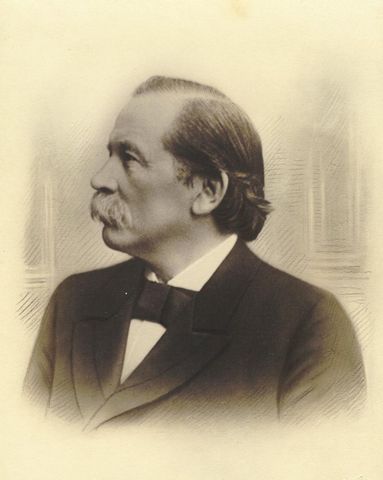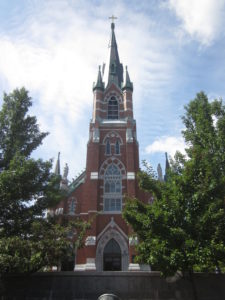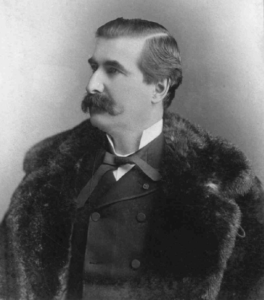The importance of Catholic societies, the necessity of union and concert of action to accomplish aught, are manifest. These societies should be organized on a religious, and not on a race or national basis. We must always remember that the Catholic Church knows no north or south, no east or west, no race, no color. National societies, as such, have no place in the church in this country; but, like this congress itself, they should be Catholic and American.
– Resolution of the Lay Catholic Congress, Baltimore, 1889
In the late nineteenth century, the lay leaders of New England’s Franco-American communities agitated for ethnic parishes and priests of their own nationality. In the Midwest, the Catholic Church faced a different set of enfants terribles—German Americans whose grievances were in fact very similar to those of expatriated Canadians. Fearing the alleged assimilationist designs of Irish-American and native-born priests, German immigrants sought to create a “national” German episcopacy on U.S. soil, that is, a hierarchy separate from that of the Irish-dominated American Church. These Germans found an advocate in Peter Paul Cahensly, the chair of an immigrant benevolence society whose name soon became synonymous with cultural accommodation. Nativists were quick to argue that the creation of a distinct German power structure in the United States, meant to forestall Americanization, would invite Prussian political influence and militarism.

Throughout the period of mass immigration, American Catholic bishops struggled to reconcile the accommodation of cultural minorities, which helped to cement their connection to the Church, with the need to contain nativism and anti-Catholic sentiments. A national Catholic congress, held in Baltimore in 1889 to celebrate the centenary of the American episcopacy, provided an opportunity to err in the latter direction. This was in reaction to recurrent ethnic demands, but also to what John Higham once deemed “the crisis of the eighties,” a resurgent tide of nativism in the late nineteenth century.
Although deemed a Lay Catholic Congress, the entire affair was orchestrated by senior members of the American clergy. Bishops were responsible for drafting the resolutions, which were ratified without debate during the convention. Among these resolutions was the statement quoted above, a measure that incensed French-Canadian and German delegates even as they were powerless to stop it.
On both sides of the border, clergy had regularly served as chaplains to French-Canadian cultural organizations and accompanied them in the symbolic and ritualistic life of their community. The looming end of this practice in the U.S. Northeast seemed to presage the abolition of national parishes and bilingual schools. “Cahenslyism” was out—and the assimilationist intents long ascribed to the American bishops (as in the Flint Affair) appeared to be confirmed.

But the outrage expressed in Franco-American newspapers in 1889-1890 can be misleading. The ratification of the resolution in such a distinguished setting itself conceals the important elements of continuity running through Church policy in the late nineteenth century. The checkerboard of national parishes survived the Congress of 1889 and its aftermath. The Canadians’ old friends in the episcopacy did not desert them: bishops Louis DeGoesbriand (Burlington), Matthew Harkins (Providence), and James A. Healy (Portland) and Archbishop John J. Williams (Boston) continued to recognize the immigrants’ concerns and interests. In fact, earlier in 1889, DeGoesbriand had taken the extraordinary step of publicly rebutting attacks of the Franco-American press on clergy and offering a vision entirely at odds with the Lay Congress resolution.
This is not to say that Franco-American fears were groundless. In this regard, it is instructive to consider their transnational context. Their concern and anger were heightened by a larger sense of siege that transcended political boundaries. Indeed, across North America, French-speaking peoples felt threatened by an incroaching pansaxonisme. Battles for education in New Brunswick and Manitoba, the aftermath of the North-West Rebellion, and the Flint Affair all suggested—in the view of the most ardent “patriots”—a desire to extinguish the French-Canadian “race.”
Briefly, Franco-Americans won official public support from Quebec where, often, in the past, they had been an object of contempt. In the wake of the North-West Rebellion, Liberal Honoré Mercier rose to the premiership of Quebec on a platform of French-Canadian “national” unity. More than any of his predecessors, Mercier voiced a French-Canadian providentialism that transcended boundaries. A year before of the Catholic Congress, he even sent two delegates—one Liberal and the other Conservative—to the great Franco-American convention in Nashua, New Hampshire, and pledged to cover part of the convention’s costs.

But all of the support of a Mercier (unceremoniously removed from office in 1891) would not suffice in the religious battles that arose in the decade after the Catholic Congress. Quebec’s bishops, heavily invested in the preservation of French-Canadian culture north of the border, chose not to intervene in the affairs of foreign dioceses even when expressing their friendship for the emigrants. In fact, Quebec elites took advantage of such religious crises to wave the banner of repatriation and domestic colonization, warning of the assimilation and apostasy that awaited French Canadians in the United States.
Franco-Americans nevertheless persisted in their defense of survivance within the U.S. Church. Resolute even in the aftermath of the Lay Catholic Congress, they sought to obtain a priest of their nationality in Danielson, Connecticut, and then a national parish in North Brookfield, Massachusetts. In 1901, when a Franco-American convention assembled in Springfield, Massachusetts, the language of “patriots” was as uncompromising as it had been a decade earlier. Nor were their struggles over: soon, the fight for cultural recognition would be transported to Maine.
The Flint Affair and the circumstances surrounding the Lay Catholic Congress highlight the aspirations of a Franco-American elite as mass immigration continued and naturalization made inroads. They tell the story of an alternative Americanism, one that did not take cultural uniformity as an inevitable or even a desirable end. They sought pluralism under shared political institutions and values and projected the same vision in religion. The Catholic Church, they believed, was broad enough to accommodate and recognize all cultures, American nativists be damned.
Further reading
P. Lacroix, “Americanization by Catholic Means: French Canadian Nationalism and Transnationalism, 1889-1901,” Journal of the Gilded Age and Progressive Era, vol. 16, no. 3 (July 2017), 284-301. Available here.
Leave a Reply